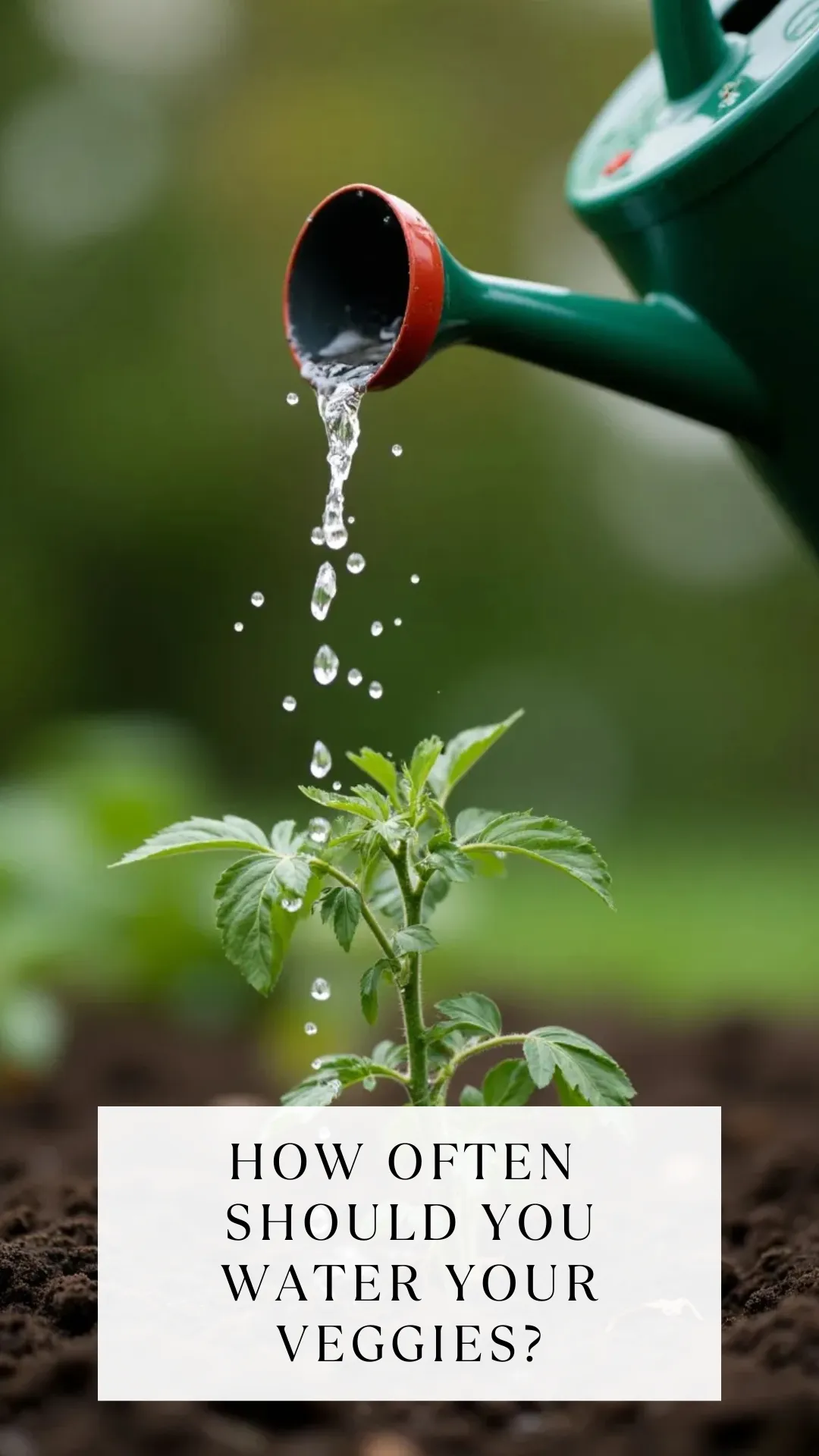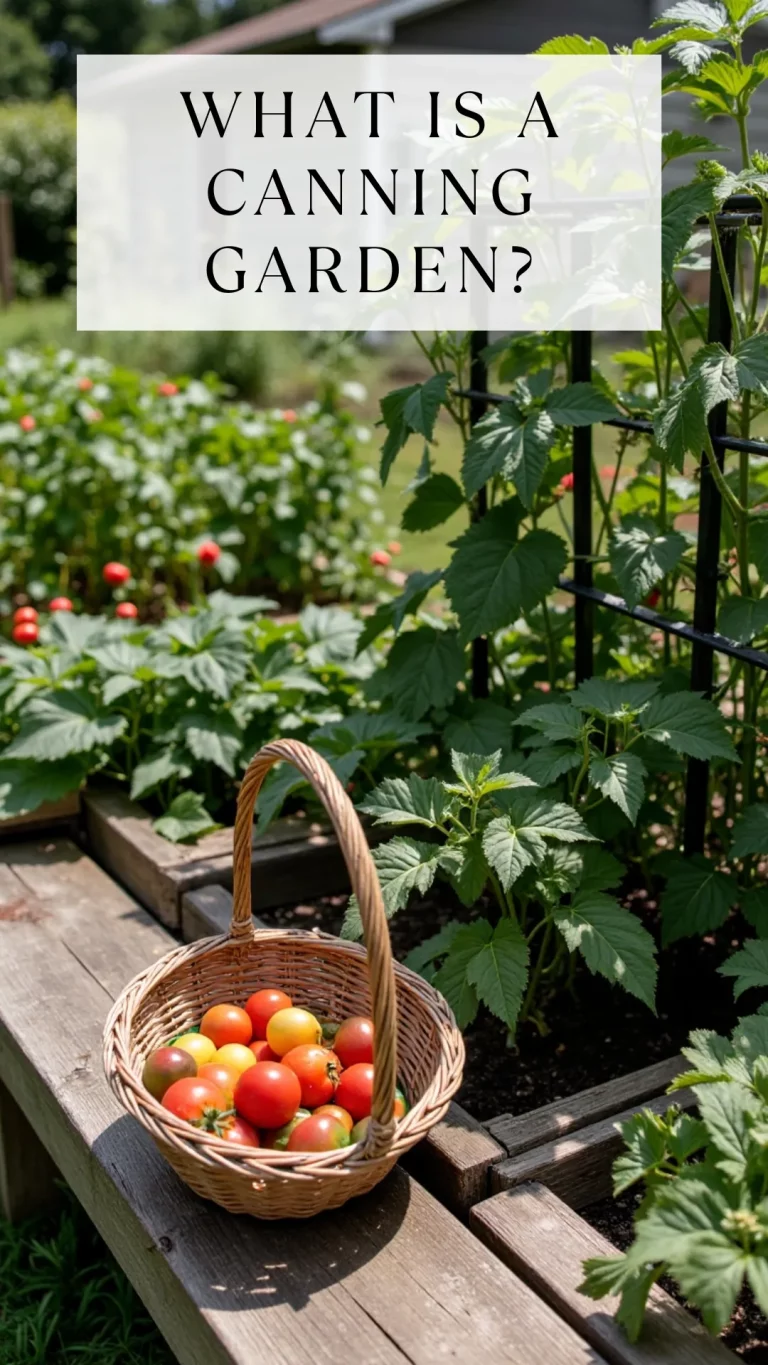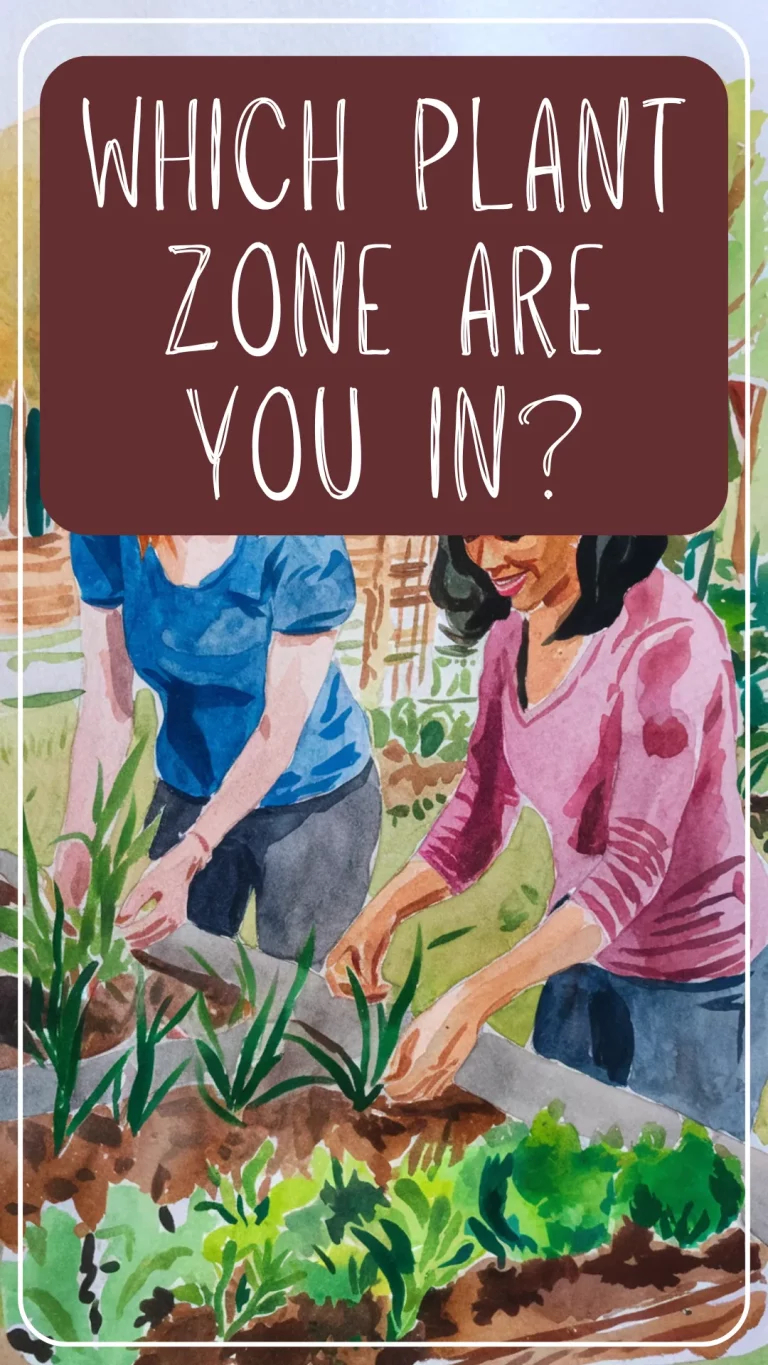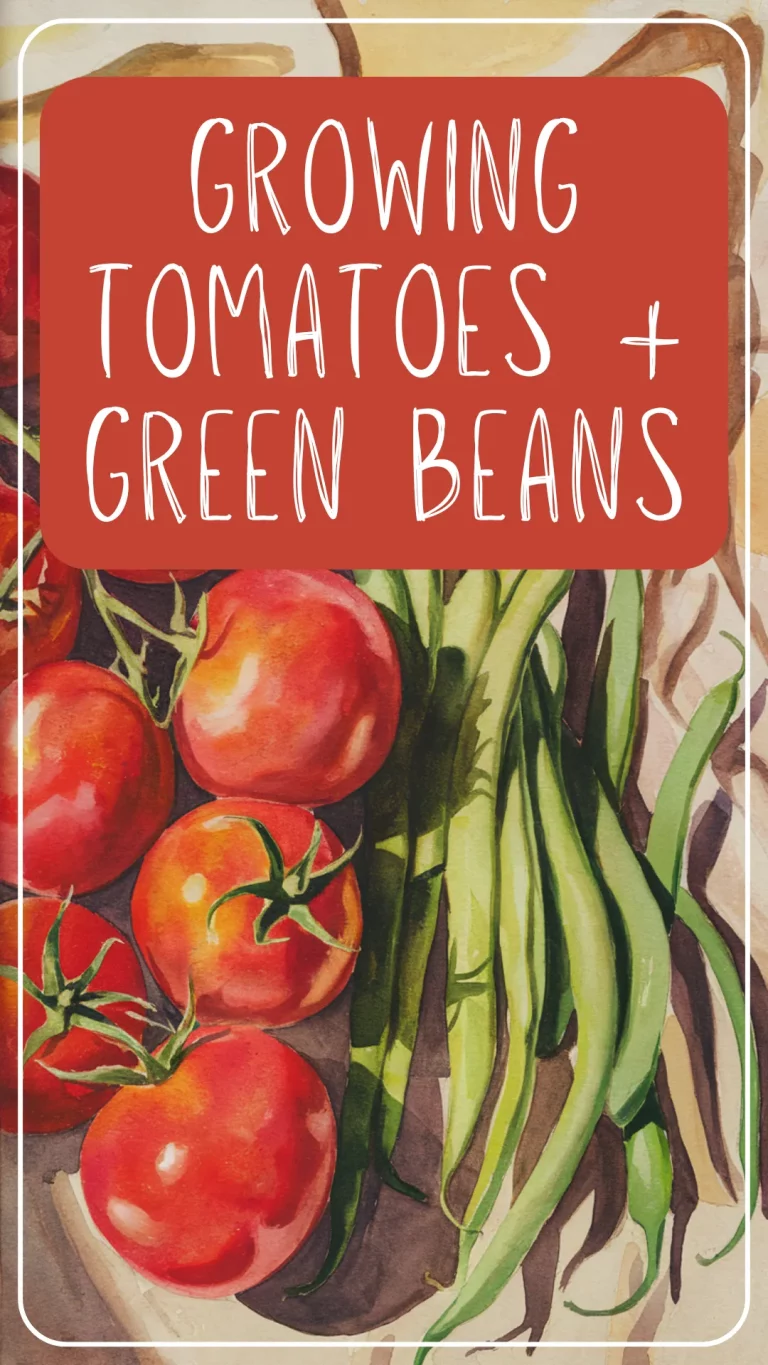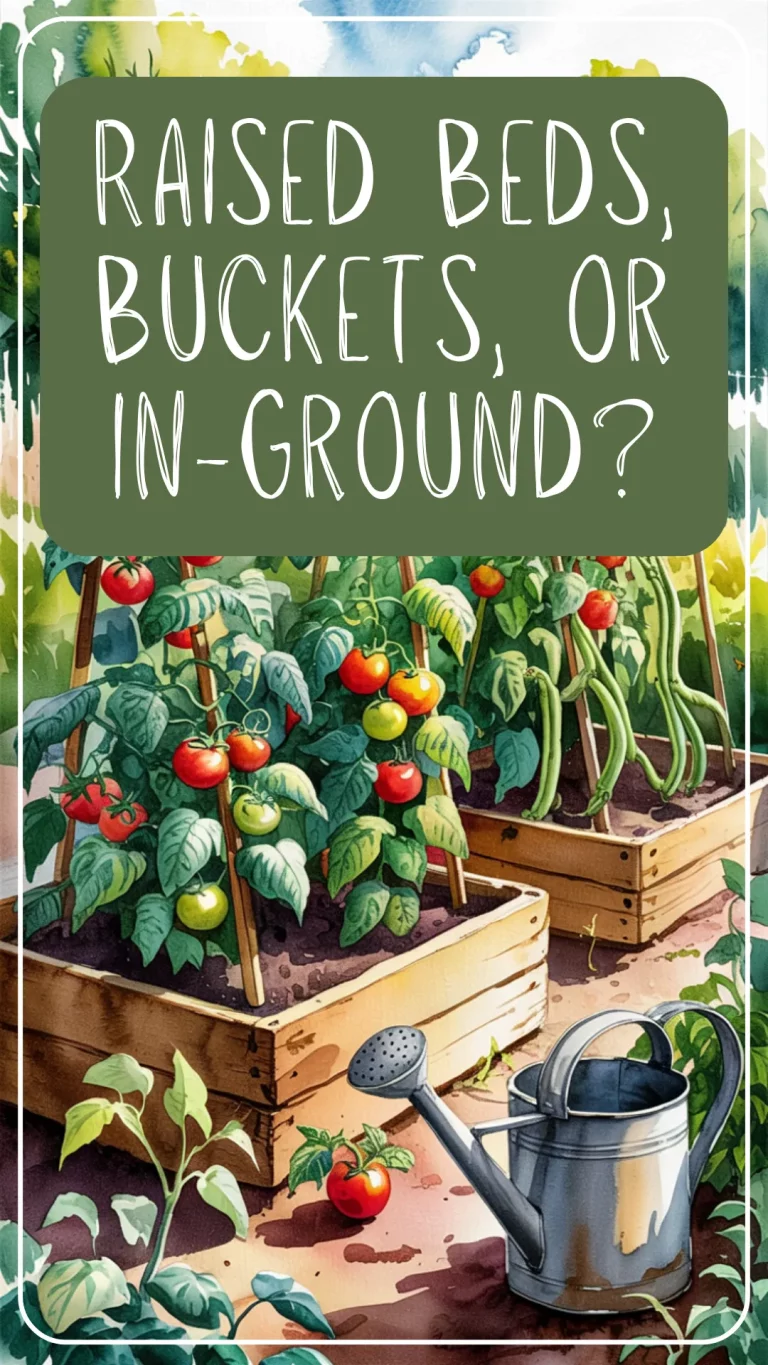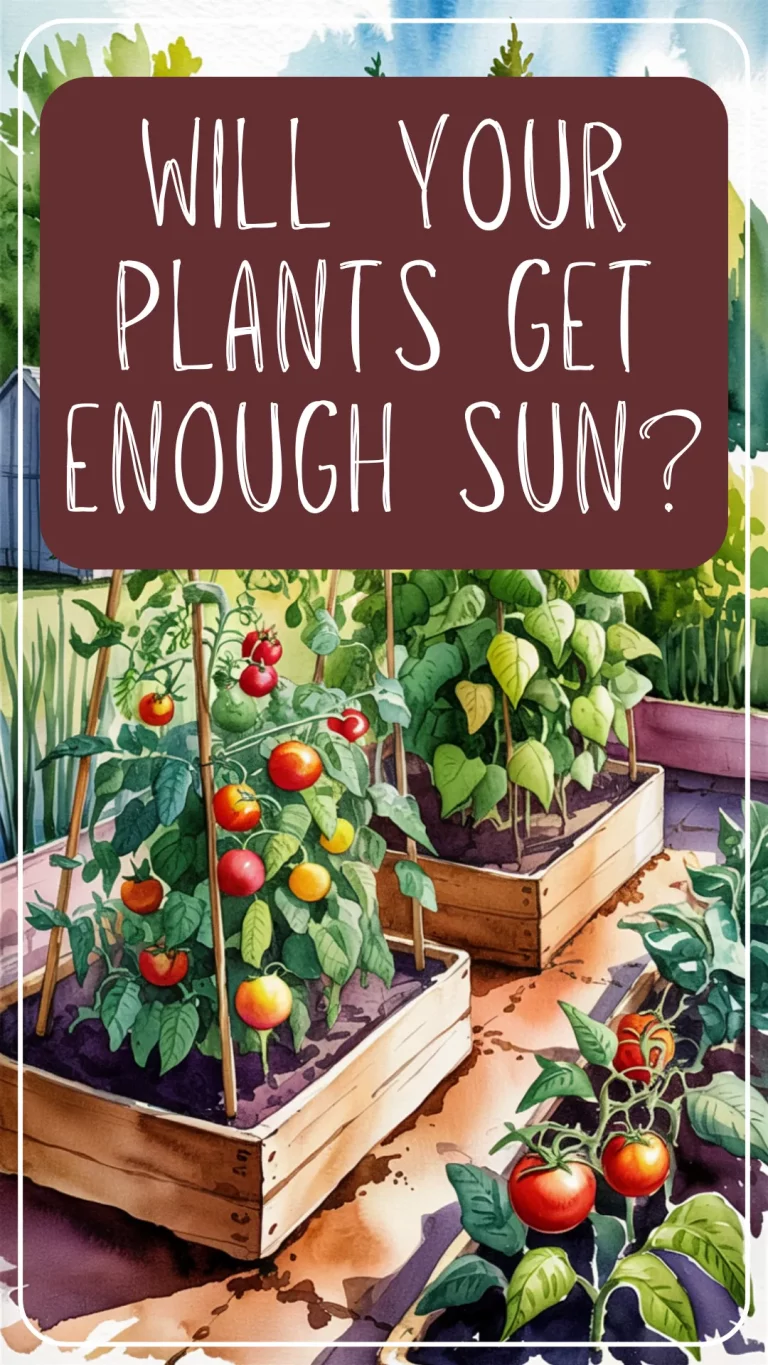How Often Should You Water Your Veggie Plants?
Most veggie plants need 1 to 1.5 inches of water a week, which usually means a deep soak two or three times weekly—more often in hot, dry weather or for young seedlings. A good rule of thumb? Water when the top few inches of soil are dry, and aim for deep, consistent moisture to build strong roots.
Keep reading for practical tips on when to water, how to tell if it’s enough, and how to avoid overdoing it.
Inside this post:
- 1 The Watering Question We All Ask
- 2 1. The General Rule (and What It Actually Means)
- 3 2. Know Your Soil (It Changes Everything)
- 4 3. What Stage Are Your Plants In?
- 5 4. Watch the Weather
- 6 5. How to Tell If You’re Watering Enough
- 7 Bonus Tips for Better Watering
- 8 You Don’t Need a Perfect Schedule—Just a Good Habit
- 9 Read Next
The Watering Question We All Ask
If you’ve ever stared at your garden hose wondering if you’re helping or hurting—same. Watering seems simple, but it’s one of the most common sources of confusion for new gardeners.
The good news? There are some general guidelines that work really well—and once you understand how your soil, weather, and plants all play together, it gets a whole lot easier to know when to water and when to wait.
1. The General Rule (and What It Actually Means)
You’ll often hear that vegetable plants need about 1 to 1.5 inches of water per week. But unless you’re measuring every drop with a rain gauge (and no judgment if you are), that doesn’t mean much on its own.
So let’s break it down:
- For most gardens, that translates to a deep watering 2 to 3 times a week
- A “deep watering” means soaking the soil enough to reach several inches down—where the roots are actually growing
- Shallow watering (a light sprinkle every day) encourages shallow roots, which makes your plants more vulnerable to heat and stress
If you can, try to water less often but more thoroughly—letting the top inch or two of soil dry out a bit between waterings. It keeps roots strong and your plants better equipped to handle summer weather.
Extra tip: stick around after watering and watch how long it takes to soak in. If it’s pooling or running off, go slower or water in stages.
2. Know Your Soil (It Changes Everything)
You and I could both be watering the same amount—but if our soil is different, our plants will respond totally differently. That’s why understanding your soil type is just as important as how often you water.
Here’s the quick breakdown:
- Sandy soil drains fast. You’ll need to water more often, but in smaller amounts to avoid washing nutrients away.
- Clay soil holds water longer, but drains slowly. Water less often—but keep an eye out for soggy spots and compacted areas.
- Loamy soil (the sweet spot) holds moisture well but still drains nicely. It’s the Goldilocks of garden soil.
If your soil is dry and crumbly just a day after watering, you might need to water more often—or improve moisture retention with compost or mulch.
Not sure what type you’ve got?
Try the squeeze test: grab a handful of moist soil.
- If it falls apart instantly, it’s likely sandy.
- If it forms a sticky clump, probably clay.
- If it holds together loosely and crumbles easily, you’re working with loam.
Soil can be improved over time—and compost is your best friend for that. Healthy, well-balanced soil makes watering easier and way more effective.
3. What Stage Are Your Plants In?
How often you water isn’t just about soil or weather—it’s also about what stage your plants are in. A freshly transplanted tomato has very different needs than one that’s flowering and starting to fruit.
Here’s a quick guide by stage:
- Seedlings
These little guys have tiny root systems and dry out fast. Water daily—or even twice a day in hot weather—keeping the soil consistently damp (but not soggy). - Young transplants
Just planted out? Water every day or two for the first week to help them settle in. Once they perk up and start growing, you can space it out. - Established plants
Once your plants are growing steadily, shift to deep watering 2–3 times a week. The goal is to encourage deep roots and avoid stress when the weather heats up. - Fruiting plants
Tomatoes, peppers, squash, and cucumbers need consistent moisture while they’re fruiting. Letting them dry out between soakings can lead to problems like blossom end rot or bitter cucumbers.
The general rule: the younger and smaller the plant, the more often you’ll need to water. As roots grow deeper, your watering can slow down—but go deeper when you do.
4. Watch the Weather
Even with all the right soil and plant knowledge, the weather still gets the final say. A stretch of hot, windy days can dry out your beds fast—while a surprise week of rain might mean you don’t need to water at all.
What to keep in mind:
- Rain counts. If you get a good soaking (about an inch), you can usually skip your next watering. Use a rain gauge—or even a tuna can—to measure how much you’re really getting.
- Hot and windy days dry things out faster. On those long, dry spells, check the soil daily, especially around young or shallow-rooted plants.
- Mulch is your secret weapon. A 2–3 inch layer of straw, shredded leaves, or bark can help keep the soil moist longer—so you don’t have to water as often.
And if a storm rolls through, don’t assume it did the job. Sometimes rain only dampens the surface—give it a poke and check a few inches down before skipping your usual watering.
5. How to Tell If You’re Watering Enough
You don’t need fancy tools to know if your garden’s thirsty—just a little observation (and maybe one muddy finger).
Try the finger test:
Stick your finger into the soil about 2–3 inches deep (knuckle-deep is perfect).
- If it feels dry all the way down, it’s time to water.
- If it’s cool and damp, you’re good.
- If it’s soggy? Time to ease off a little.
Plant signals to watch for:
- Drooping leaves first thing in the morning = probably under-watered
- Drooping in the afternoon only, but perky by evening = totally normal (just heat stress)
- Yellowing leaves and mushy soil = you might be overdoing it
Every plant has its own rhythm, but once you start checking the soil regularly, you’ll quickly get a feel for what “just right” looks like in your garden.
Bonus Tips for Better Watering
These little tweaks can make a big difference—especially once the summer heat kicks in:
Water in the morning
Early watering gives plants time to absorb moisture before the sun gets too intense, and it helps prevent fungal issues caused by overnight dampness.
Water at the base
Aim for the roots, not the leaves. Wet foliage can invite disease and waste water. A gentle stream at the soil line is best—either by hand or with a soaker hose.
Consider drip irrigation or soaker hoses
If you’ve got a bigger garden or you’re tired of playing hose wrangler, a simple irrigation system saves time and keeps watering consistent.
Use mulch to stretch your watering schedule
A good layer of mulch helps lock in moisture and can cut your watering needs nearly in half.
You Don’t Need a Perfect Schedule—Just a Good Habit
Watering your veggie garden doesn’t have to be a guessing game. Once you understand your soil, pay attention to the weather, and check in on your plants regularly, you’ll start to feel when it’s time to water.
There’s no one-size-fits-all routine—just a rhythm that works for your garden, in your climate, with your plants. So don’t stress about doing it “right.” Start with a deep soak a couple times a week, and adjust as you go.
Your plants will let you know how you’re doing—and they’re usually pretty forgiving once you get into a groove.
Read Next
Ready to grow a thriving, low-stress garden? These posts will help:
- How to Stop Pests Eating Your Veggies – Healthy, well-watered plants bounce back faster, but here’s what to do when the bugs show up hungry.
- What Planting Zone Am I In? – Knowing your zone helps you time your watering, planting, and harvests more accurately.
- Planning Your Canning Garden – Learn how to grow what you’ll actually want to preserve (and why smart watering helps your yields).
- The Canning Garden Calendar – A month-by-month guide to staying on track from seed to shelf.
